The history of American hacking is a captivating saga of brilliant minds operating in the digital shadows. It’s a world of audacious intrusions, ideological battles, and incredible redemptions. These individuals, armed with little more than a modem and relentless curiosity, shaped our understanding of cybersecurity, privacy, and power in the internet age.
This article delves into the lives of the most famous Top 10 US Hackers, exploring not just their crimes, but their families, education, motivations, and the complex legacies they left behind.
1. Kevin Mitnick: The World’s Most Famous Hacker
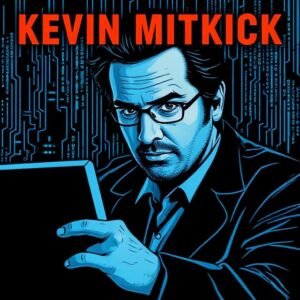
Title: The Ghost Who Wired the World
Full Detail:
Family & Lifestyle: Born in 1963 in Van Nuys, California. Mitnick’s interest in hacking began in his teens. His lifestyle was that of a digital phantom, constantly on the move while eluding the FBI. He was famously a master of “social engineering”—the art of manipulating people into breaking security procedures—rather than just relying on technical exploits. After his release from prison, he transformed his life, becoming a reputable security consultant, author, and public speaker. He was married twice and had no children. He passed away in July 2023 after a battle with pancreatic cancer.
Education: Attended Pierce College and USC but did not graduate. His real education was in the phone phreak and hacker communities of the 1970s and 80s.
Work for Company: After his prison term (1995-2000), he founded Mitnick Security Consulting and later KnowBe4, a security awareness training company. He was the Chief Hacking Officer of KnowBe4.
Net Worth: At the time of his death, Kevin Mitnick’s estimated net worth was around $12 million, earned through his consulting business, books, and public speaking.
The Story: Mitnick’s notoriety peaked in the 1990s when a federal warrant accused him of accessing dozens of corporate computer networks. His two-year run from the FBI was sensationalized in the media, painting him as a dangerous cyber-terrorist, though he claimed he was primarily motivated by curiosity and the thrill of access, not profit. His case sparked massive debates about privacy and the overreach of computer crime laws.
2. Adrian Lamo: The Homeless Hacker
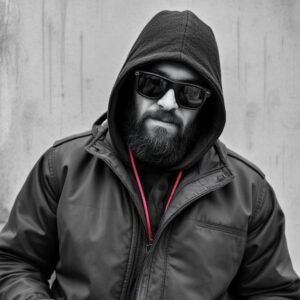
Title: The Digital Nomad Who Turned In a Source
Full Detail:
Family & Lifestyle: Born in 1981 in Boston, Massachusetts. Lamo was known for his nomadic lifestyle, often hopping from city to city, hacking from public libraries, coffee shops, and internet cafes. He suffered from substance abuse and mental health issues. He identified as genderfluid. Lamo passed away in 2018 at the age of 37.
Education: He was largely self-taught and did not attend college.
Work for Company: He worked sporadically as a threat analyst and journalist but was never a formal employee of a major company. He was a public figure in the hacker community.
Net Worth: Adrian Lamo’s net worth was difficult to determine but was estimated to be very low, likely less than $100,000, as he did not profit from his hacking and lived a transient lifestyle.
The Story: Lamo gained fame for breaching the internal networks of major corporations like Yahoo!, Microsoft, and The New York Times, where he added his own name to a list of expert sources. His most consequential act was reporting U.S. Army intelligence analyst Chelsea Manning to the authorities after she confided in him about being the source of the WikiLeaks disclosures. This made him a deeply controversial figure, seen as a traitor by some and a responsible citizen by others.
3. Jonathan James: The Teenage Prodigy

Title: The Boy Who Breached NASA
Full Detail:
Family & Lifestyle: Born in 1983 in Miami, Florida. James was a quiet, intellectually gifted teenager who became immersed in the hacker world from his bedroom. His later life was marred by legal troubles. In 2008, he was investigated in connection with the massive TJX data breach. Maintaining his innocence but facing the prospect of a long prison sentence, James died by suicide at the age of 24.
Education: He was a high school student during his most famous hacks.
Work for Company: He never worked for a major corporation. After his conviction, he attempted to start a computer security company.
Net Worth: At the time of his death, his net worth was negligible.
The Story: At just 15 years old, James hacked into the systems of the Department of Defense and NASA, intercepting over 3,000 messages and stealing software worth approximately $1.7 million. The software controlled the life support systems for the International Space Station, prompting NASA to shut down its network. He was the first juvenile to be incarcerated for cybercrime in the US.
4. Albert Gonzalez: The King of Cybercrime
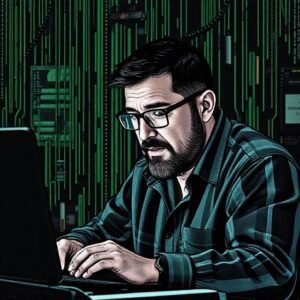
Title: The Architect of Modern Data Theft
Full Detail:
Family & Lifestyle: Born in 1981 in Havana, Cuba, and raised in Miami, Florida. Gonzalez lived a shocking double life. To his neighbors, he was a simple college student. In secret, he was a prolific criminal mastermind, stashing over $1 million in cash in a hole in his parents’ backyard and living a lavish lifestyle funded by his crimes.
Education: Attended Miami-Dade Community College but did not graduate.
Work for Company: Ironically, he was once a paid informant for the U.S. Secret Service, helping them track other hackers while he was simultaneously orchestrating his own massive breaches.
Net Worth: He amassed an estimated $2.8 million from his criminal activities, which was seized by the government.
The Story: Gonzalez was the mastermind behind the theft and resale of over 180 million payment card accounts from companies like TJX, Heartland Payment Systems, OfficeMax, and Dave & Buster’s. His attacks were sophisticated, using SQL injection and a sophisticated “wardriving” scheme to set up access points. He is currently serving a 20-year federal prison sentence.
5. Kevin Poulsen (“Dark Dante”): The Broadcast Bandit

Title: The King of Phone Phreaking
Full Detail:
Family & Lifestyle: Born in 1965 in Pasadena, California. Poulsen was a classic “phone phreak” who evolved into a hacker. After serving a five-year prison sentence, he completely reinvented himself as an award-winning investigative journalist, specializing in cybercrime and national security.
Education: He was largely self-taught in his youth.
Work for Company: He was a senior editor for WIRED Magazine and later founded and edited the nonprofit investigative news site The Dark Tangent. He is now the Director of Research at The Institute for Security and Technology.
Net Worth: Estimated to be in the range of $1 – $5 million, earned through his successful journalism career.
The Story: Poulsen’s most famous hack involved seizing all the phone lines of Los Angeles radio station KIIS-FM to ensure he would be the 102nd caller and win a Porsche 944 S2. He also hacked federal systems for wiretap information, earning a place on the FBI’s Most Wanted list. His transformation from fugitive to journalist is one of the most remarkable in hacker history.
6. Jeansonne Ancheta: The Botnet Baron
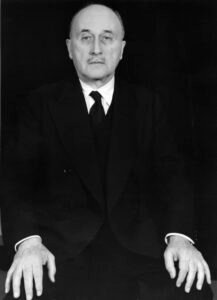
Title: The Digital Arms Dealer
Full Detail:
Family & Lifestyle: Born in 1985, details about his personal life are scarce. He operated from his home, building a sophisticated criminal enterprise.
Education: He was a self-taught programmer and hacker.
Work for Company: He never worked for a legitimate security company. His “work” was criminal.
Net Worth: He profited significantly from his schemes, but the exact amount is unknown. The government seized his assets, including a BMW and hundreds of thousands of dollars.
The Story: Ancheta was a trailblazer in criminal monetization. He didn’t just use his massive botnet (armies of infected computers) for spam; he also sold access to these infected machines to other spammers and hackers. Furthermore, he used the botnets to install adware on victims’ computers, earning commissions from the adware companies. He was the first person convicted for controlling a botnet for such diversified criminal profit.
7. Marcus Hutchins (“MalwareTech”): The Accidental Hero

Title: The Savior Who Fell from Grace
Full Detail:
Family & Lifestyle: Born in 1994 in Devon, England (included for his significant impact on US cybersecurity). He was a young, brilliant security researcher living in the US.
Education: Largely self-taught.
Work for Company: He worked for the Los Angeles-based cybersecurity firm Kryptos Logic as a senior security researcher.
Net Worth: Estimated to be around $500,000, earned through his work in cybersecurity.
The Story: In 2017, Hutchins became an international hero when he accidentally discovered and activated the “kill switch” that halted the global WannaCry ransomware outbreak. Months later, he was arrested by the FBI for his role in creating and distributing the Kronos banking trojan years earlier. He pleaded guilty, with his lawyers arguing his teenage actions were a far cry from the man he became. His case highlights the complex and often grey pasts of many who enter the cybersecurity field.
8. Max Ray Butler (“Iceman”): The Credit Card Kingpin
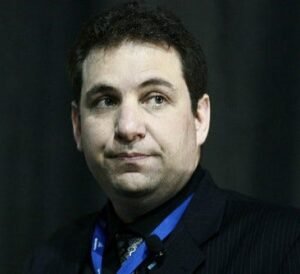
Title: The Shadow in the Carding Underground
Full Detail:
Family & Lifestyle: Born in 1971 in Indiana. Butler was a former white-hat hacker who turned to a life of high-stakes cybercrime. He was known for his meticulous and secretive nature.
Education: Attended the University of California, San Diego.
Work for Company: He previously worked as a security consultant for various U.S. government agencies.
Net Worth: He made millions from his criminal enterprises, though most of it was laundered and hidden.
The Story: After a conviction for hacking US government systems, Butler turned to the dark web. He created “Carders Market,” a massive, invitation-only forum that became the premier online hub for buying and selling stolen credit card data and identities. He was eventually caught and sentenced to 13 years in prison.
9. The Masters of Deception (MOD): The Gang That Ruled the Wires
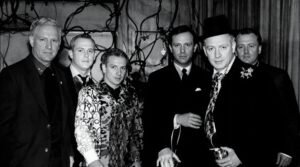
Title: The Phreak Street Warriors
Full Detail:
Family & Lifestyle: MOD was a hacker group based in New York City, primarily composed of teenagers from various backgrounds, including Mark Abene (“Phiber Optik”), Paul Stira (“Scorpion”), and Elias Ladopoulos (“Acid Phreak”). They operated from their bedrooms, waging a “hacker war” against a rival group from Texas called the Legion of Doom (LOD).
Education: They were mostly high school students, learning through experimentation and the underground BBS scene.
Work for Company: After their convictions, some members, most notably Mark Abene (“Phiber Optik”), went on to have successful careers as security consultants for major corporations.
Net Worth: Varies by member. Abene found success in the corporate world, while others faded from public view.
The Story: MOD specialized in “phone phreaking”—hacking the telephone network—to gain free long-distance calls, access corporate voicemail, and explore the nascent internet. Their activities led to a massive FBI investigation and widespread arrests, highlighting the vulnerabilities of the national telecom infrastructure.
10. Anonymous & LulzSec (Collectives): The Faceless Legions

Title: The Digital Robin Hoods
Full Detail:
Family & Lifestyle: Not applicable, as these are decentralized collectives with no formal membership. Participants are typically anonymous individuals from all walks of life.
Education: Varies wildly from self-taught teenagers to highly skilled IT professionals.
Work for Company: Members hold day jobs across all industries.
Net Worth: Not applicable.
The Story: Anonymous is a leaderless digital collective known for hacktivist operations targeting governments, corporations, and religious organizations in the name of political freedom and transparency. LulzSec, a smaller offshoot, was motivated by “lulz” (laughter at someone’s expense), hacking entities like Sony, PBS, and the U.S. Senate for chaos and publicity. While many participants have been arrested, the ideals and the iconic Guy Fawkes mask of Anonymous remain a powerful symbol of digital dissent.
Conclusion
The stories of these Top 10 US Hackers form the foundational mythology of the digital age. They are cautionary tales about the seductive power of knowledge and access, but also stories of reformation and the blurred line between causing harm and exposing weakness. Their actions, whether criminal or altruistic, forced the world to build the digital walls we now take for granted, forever changing the landscape of technology, security, and privacy.







